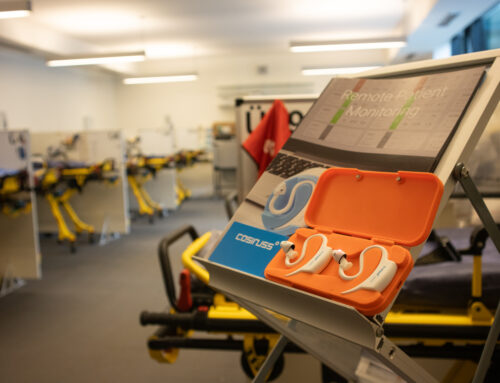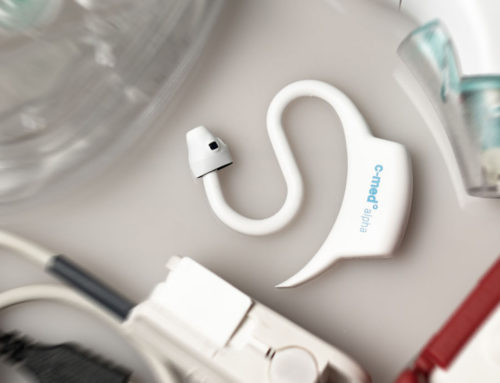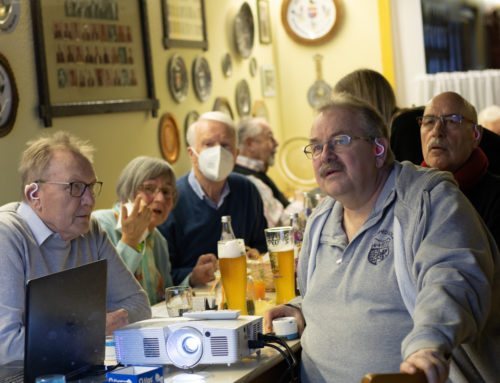High Pulse When Exercising
Reasons, Questions and some Tips
Sunday morning: You are feeling great. The sun is shining. You’re totally motivated. Your running shoes are new. You recently purchased new running clothes. Now you are ready to go. First, a small lap. You haven’t been running for a long time. Now you want to get on it again. GA1 does your training schedule. Take it easy, relaxed and the heart rate shouldn’t be over 140.
Said and done. The first steps are managed smoothly. You are full of hope. Then you look at your heart rate monitor. “Oh no!” It shows a pulse rate of 165.
“How can that be? If I would run more slowly, I’d be standing still! “You’re confused. The steps are getting more and more severe. You have a heavy feeling in your body. The carotid artery is throbbing.
“Well, then I just reduce the speed a little. The most important thing is to be faster than the walker that you have right behind you. ” You keep on running. However it does not help. “What does the heart rate monitor say? 168 !! Even Worse. “How can that be? It makes you pretty frustrated.
Well, can you see yourself again? I am sure, that each one of us, and I mean every endurance athlete has started from somewhere. With running. With jogging. Or with any other type of aerobic exercise.
During Running
I have a high pulse while running? What can I do?
“The one, who measures very often, measures mud”. That’s what I once got told during my engineering studies from a smart professor. I found this statement very exciting. It was told at a moment during an internship for metrology.
This is no different in sports. We wire ourselves more and more. We become a living observation station. It starts with the pulse measurement. “How is my pulse? Do I have a too high pulse? Is it too low? What can I do about it. “ In addition to that you get these little tools which come as a GPS, pedometer or calorie meter. The data inundate us. “Is running at a too high pulse dangerous?” Maybe. “Do I burn more calories with a high pulse than with a low pulse?” Probably yes. “How should my pulse behave when I go up the mountain, how do I get it down again when it’s flat .”
Let us take a step back at this point and focus on the pulse itself. I keep on hearing questions about the high pulse. Let’s take the time to pick up a few of these questions.
A heart rate monitor? You know this one and probably own it too. Long time ago, you were still belonging to the freaks. I still remember. Almost 15 years ago, I bought my first heart rate monitor. I was so proud. Whether high pulse or low pulse. I just wanted to measure it, evaluate it. I wanted to know exactly at what moment, I had a high pulse. How fast was I able to reduce the high pulse. How was my pulse rate developing in the course of a run.
Yes, it went even so far that I took the heart rate monitor to bed. Somewhere I had read that “someone, who is particularly well trained, wakes up in the morning with a pulse of less than 50. If that person is really good, then the pulse is even under 40.” I wanted to test that firsthand. And for that, the heart rate monitor was just right for me.
Today, the heart rate monitor has become a mainstream product. For recreational athletes, the heart rate monitor is a faithful companion during sports. Whether you are running, swimming or cycling. The pulse monitor is always there. I even wear it, when I am writing. Even now, in this moment, when my fingers are creating this text. However, I have to admit that I’m a nerd. I have not a high pulse. Nevertheless, I want to know my pulse.
But even with the masses, the heart rate monitor is popular. The designs are more beautiful. The heart rate monitors have become practical. I still come from the “chest strap generation”. Today, the heart rate monitor is a fashion item. You can measure a high pulse with it. But you can also see how many steps you’ve walked and how many calories you have burned.
You no longer wear the modern heart rate monitor on your chest. To measure a high pulse, it is sufficient to have a device on your wrist. If you want to have nothing on your wrist, then the ear offers another option. Yes, you can also measure your pulse there. Even pretty accurately. Whether high pulse or not, the ear is a valuable source for the measurement of important body vital functions.
A high pulse while running – where does that come from?
A high pulse during running is a sign of your body. It signals “Attention!-, you move in a peculiar way”. Peculiar, at this point, can stand for a variety of options.
It could mean, that you’re not fit enough to burden your body in the way, you do it right now. Or you were sick and are not 100% cured. Maybe you are running on a too steep road comparing to your fitness level or the speed that you are running is too fast for your fitness level.
This doesn’t apply for walking. Any kind of physical work or effort that challenges you in a exceptional way, causes at first a high pulse.
Dangerous?
Is a very high pulse during running dangerous?
“Wow, if I am exercising to long with a high pulse, isn’t that dangerous?” A fair question, which can not be answered easily or completely. There is no right or wrong in this sense. What exactly does actually dangerous mean at this point? I would distinguish two cases here:
“Dangerous” with the meaning of dangerous for your health or damaging to your health
“Dangerous” in the sense of not productive for your further training progress
Let’s start with the first point. A high pulse while running is dangerous to your health, if it is a warning signal of your body. If your body very clearly indicates “Attention, please think about what you’re doing.” That may be the case in the following situations.
You didn’t run for many years. The ravages of time take their toll. You gained a bit more weight. In order to get everything under control, you immediately start with a brisk run around your favorite lake. After a few meters, your pulse is so high that you can feel it in the neck . You’re top-motivated and continue anyway.
In this case, the high pulse is one of many indicators, that you want to do it the sporty way. Your body is not used to that kind of load and shouts “Stop, please quit”. If you are taking in too much to be on the top, your body might press the emergency stop button.
You are in great shape. You are well trained. You know your pulse zone. The competition date is getting closer and closer. It is hot. The sun is burning. The thermometer shows nearly 40 ° C. You start to run. Your pulse is too high. You are not able to get it down. You are getting nervous, because the pace is unknown for your circumstances. Your head wants, the body won’t. You feel a little dizzy.
This is a clear case that “something is wrong”. It is important and right, to go to the limits. Especially in endurance sports. However, a high pulse in line with other physical troubles is a clear sign of “sometimes it’s just better to recognize the signs, to protect yourself and to look after your health as a top priority.”
Let’s talk about the second point. Is a high pulse dangerous for the training progress? Meaning a too high pulse might say “Attention, today you’re not quite fit”? Yes, it can be. There is always a reason for a too high pulse during training. You should be able to recognize this and to question it.
Are you exercising according to a plan and with a heart rate monitor? Then you should know your training zones. Which pulse corresponds to a loose training for you? Which pulse is for you the pulse at a tempo run and what’s your pulse like, when you increase your speed as it would be during a competition? If you know your pulse zones, then you can recognize a high pulse immediately. It is important to deal with it in a neutral way, which means that on the one hand you should not panic, but also on the other hand side, you should’t ignore it.
Imagine the following question: Did I sleep bad last night, am I just under stress, maybe I still do have a bit of a cold or I simply have eaten too much? Perhaps you are back in training, although your last big competition was a few days ago?
It is important, that in the course of time you get a sense of when you do or do not have a high pulse. If a high pulse is caused by the fact that you had to much stress at work or the dinner in the evening was too much, you can be relaxed. The training is in this case not that easy, but you can be sure that you won’t put your health in danger.
The situation is different, if the cause for the high pulse lies in a not yet faded disease. A typical cold is one of the classics. It is also dangerous, if you get back too fast into your training routine right after a big event, like a marathon, half marathon or triathlon. Your body, your muscles are still too busy to regenerate. The individual muscle fibers are at a microscopic level damaged after an intense competition. You have to start the repair work after the race. If you give your body not enough time and space to recover, it reacts with incomprehension. It won’t give you the performance level that you’re used to. The result? You can guess it: a too high pulse.
Despite regular training
A high pulse despite regular training? How can that be?
You are happy with your results and the progress of your training.
Your goal is the next triathlon, an IRONMAN or perhaps a marathon. This morning you got up. The night was good. It’s time for the regular morning run. You directly start. No breakfast. A sip of water from the tap. And off you go.
The pulse shoots up. Not only today. Yesterday it was the same. You wonder about the high pulse. It doesn’t want to go down. What’s happening? You exercise regularly and diligently. How can that be?
Let me say one thing about it. Every person is different. Every athlete works differently. And thus also every organism. A high pulse of 160 does not mean that you’re running at the limit. I was able to observe that in my training group. There were boys and girls, who were all in a good mood. No athletes. But good in training. To train under loose conditions, meant to them, to have pulse values of around 160 beats per minute during running. They felt comfortable with it and persevered. And me, I was running with 160 beats already during a higher competition speed. 130 beats per minute settled with me usually during a loose endurance run. That’s a big difference.
But also your health can be crucial. Do you still have a cold? Is your stomach still busy digesting a heavy dinner or did you have stress and hassle at work? All this may cause a high pulse. You are in training. Actually you are fit. However, your pulse still shoots up as soon as you move. This is a sign to perhaps slow down a little.
I am a beginner and have constantly a high pulse, what can I do?
You just started with the sport. With running or jogging. You constantly have a too high pulse. A typical phenomenon. Your body is yet not used to be strained that much. Especially running turns your entire body upside down. The legs anyway. The upper body has to stabilize you. The arms swing along. If you’re not used to it, then your whole body is overwhelmed.
All body parts begin frantically to call for oxygen. Oxygen is the fuel for your muscles. Oxygen is transported through the blood. The heart is responsible for the transport of the blood. You deliver the oxygen by strong inhaling and exhaling. The more your body screams for oxygen, the faster the heart has to pump to supply the muscles with oxygen. The result: a high pulse.
As a beginner, your body needs to get used to the physical stress. Over time, your body is more experienced in dealing with the burden and knows exactly when, where and in what amounts it has to transport oxygen. Things don’t usually come immediately. You also don’t have to always go to your limits. Your body can economise its resources then in a more effective way. The pulse is your indicator of the fitness level of your body.
Cardiac Shift
Another phenomenon could be the cause of a too high pulse. In science, it is known as the “Cardiac Shift” caused by increased core body temperature during sports. Underlying this is the observation that your heart rate increases by 10-15 beats per minute, although you are keeping a constant physical load in your training.
What exactly is the Cardiac Drift?
Cardiac drift is an indication, that your body core temperature, the current fluid balance and electrolyte supply are off balance.
Your body tries to transport to the skin as much blood as possible, to cool down during a workout. The result: there is less blood available to carry oxygen to the muscles. The consequence is, that your heart starts beating faster to compensate for the loss of oxygen transport. Your pulse rises.
The simultaneous loss of liquid (through sweating) ensures that your blood is significantly thicker, which means it gets more difficult for the heart to effectively transport the blood through the body. The consequence: the per time unit transported volume gets smaller. To pump about the same amount of blood per time unit to the muscles, the heart has to beat faster. When the heart beats faster, your pulse increases.
What exactly can you do against the Cardiac Drift?
There is no golden rule for that. There are rather a series of tips that you could consider as an athlete. It starts with the clothing. A rule of thumb is, that you should dress in such a way, that you feel like 20 degrees warmer than the outdoor temperature. Another option would be to drink regularly and deliberately. Even if you are not necessarily thirsty, it helps your body to ensure a “liquid” blood transport.






